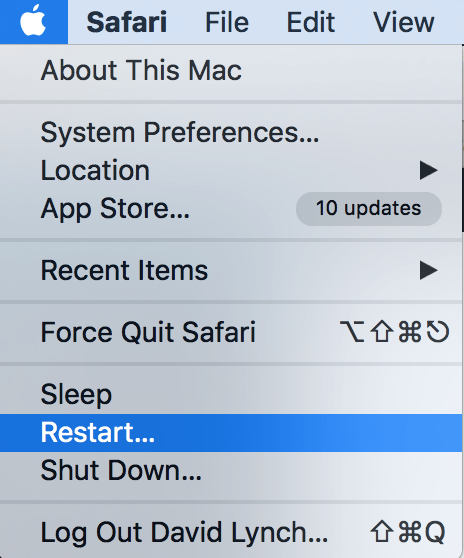
If one of the applications in Apple’s iWork suite is crashing after picking a template or clicking in an editable field, clearing the iWork font cache can help.
Mac restart clear cache mac os x#
Rather than exhaustively list the possible names and locations for Adobe font caches, it is simpler to use the Find feature of the Mac OS X Finder to locate these files for you, then delete them. The different versions of Adobe applications create font caches with various names in several locations. If your font display problems are limited to Adobe applications, it may be due to a corrupt Adobe-specific font cache. When the process is complete, type exit to end your command line session, choose File > Quit to exit Terminal, then restart your Macintosh.Type your password at the prompt (no characters will echo back to the screen).Type sudo atsutil databases -remove and press Return.

Start Terminal (located in the Utilities folder press Command-Shift-U to open this folder).To use the utility, you need to log in with an administrator account. I deliberately QUIT the things I am done with.OS X includes a command line utility for cleaning the system font cache. I feel leaving Applications partly running in the background is sloppy, and I won't work that way. I should decide when Applications will quit, not some algorithm. (So much for those promises that this would all be automatic.) But Apple glossy literature assured us that these lingering background Applications would be halted and removed when resources were needed. This can create a completely unnecessary crisis later, when resources become scarce. By default, they linger in the Background to facilitate their re-launch, if desired. Mavericks and slightly older Applications do not QUIT (which Does relinquish all their memory) when their Windows are merely closed. All its memory will be returned to the free pool and be available for use. In order to quit an Application and have it relinquish its memory, choose Quit from its main menu. That statement is not quite right as written. He said that in Mavericks (maybe other OSs, I just don't recall) applications do not relinquish their RAM memory until a 'Restart' AND RECOMMENDED shutting down computers at night partially for that reason.


 0 kommentar(er)
0 kommentar(er)
